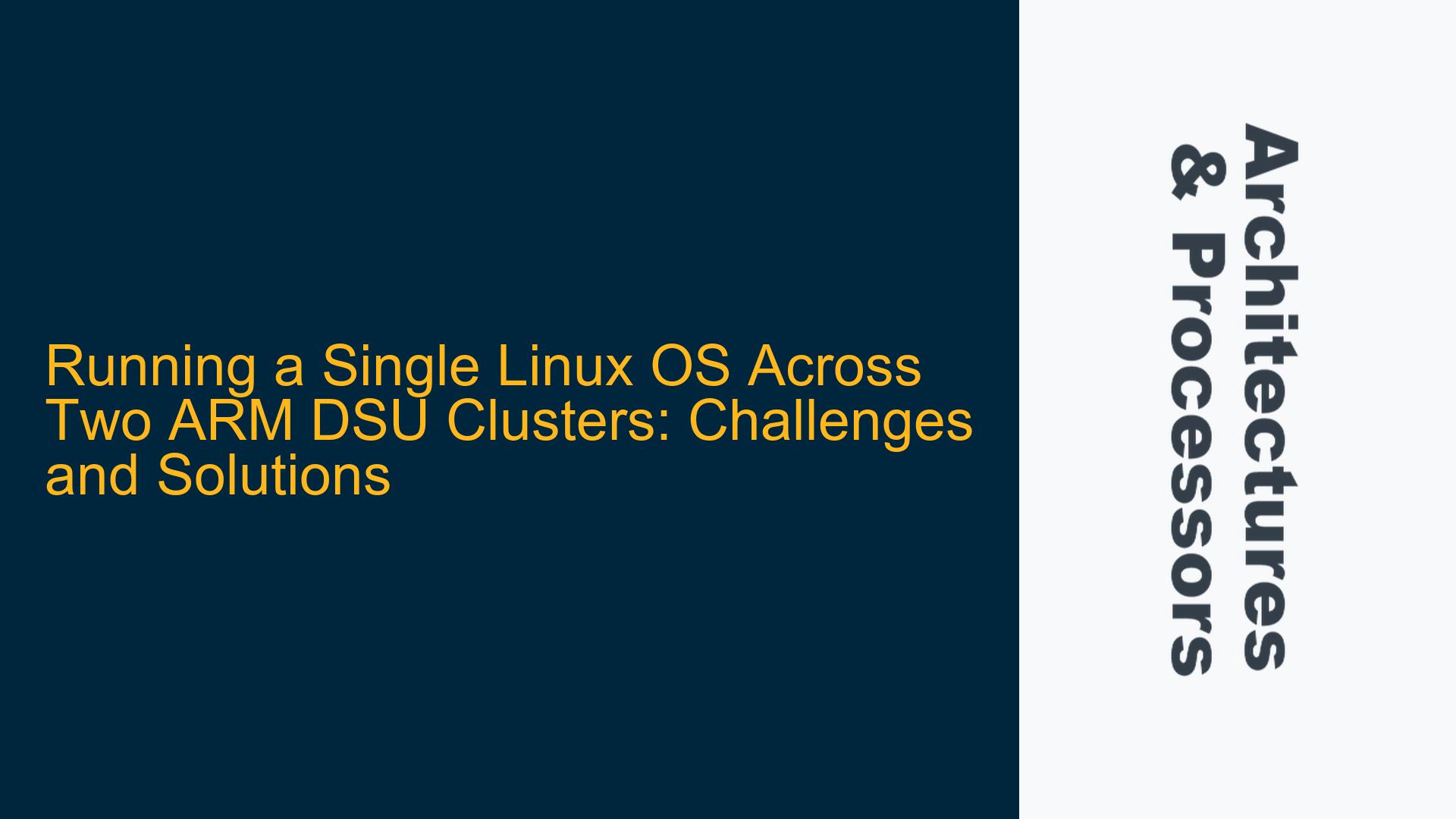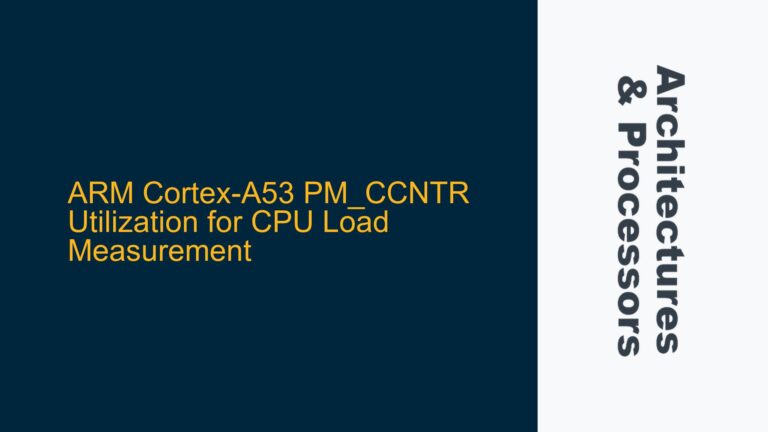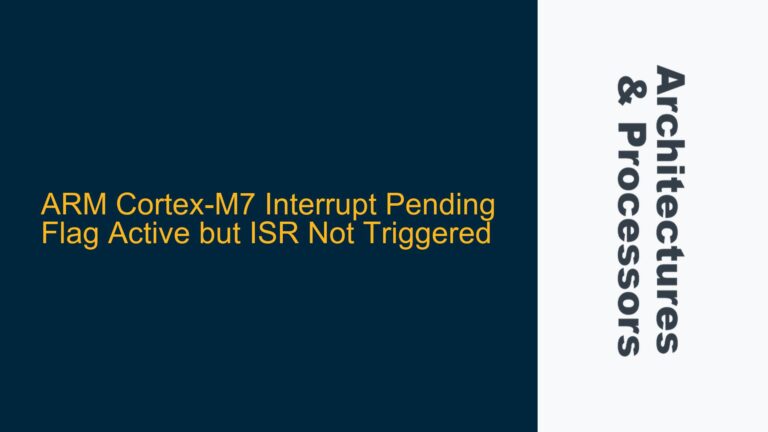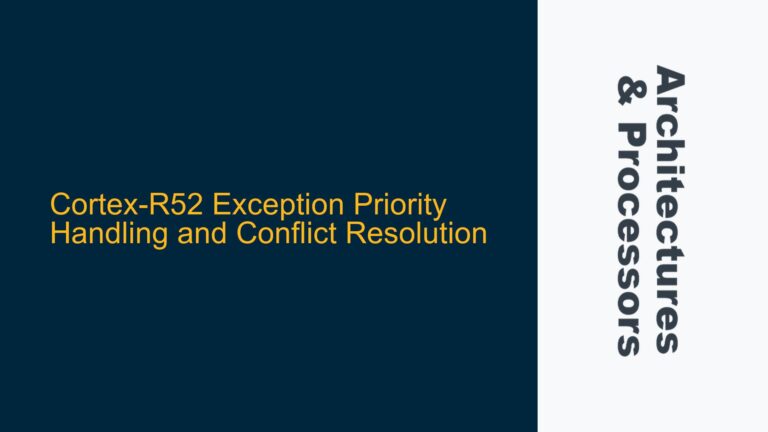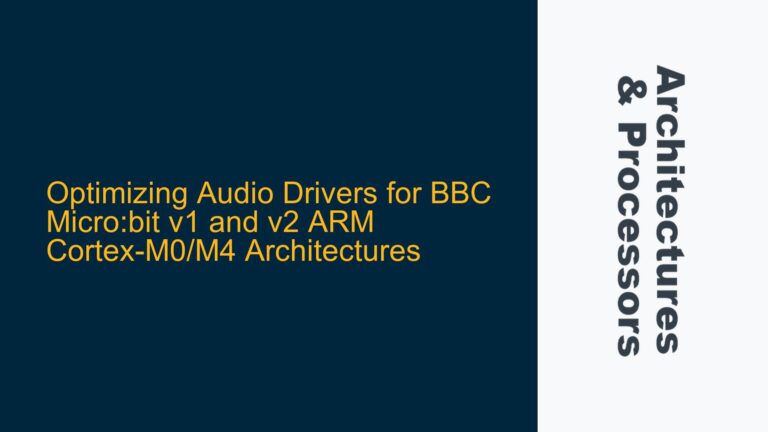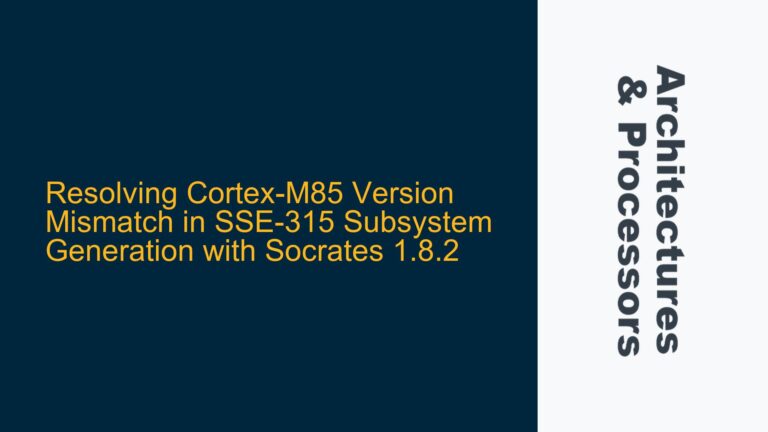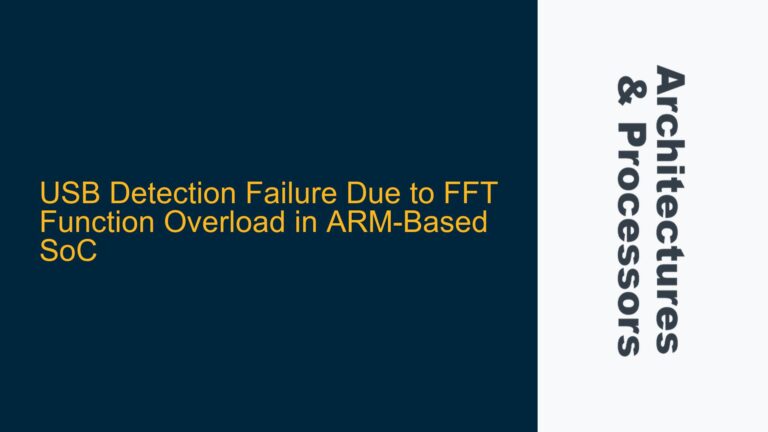ARM DSU Cluster Architecture and Linux Scheduling Constraints
The scenario involves an ARM-based System-on-Chip (SoC) with two Dynamic Shared Unit (DSU) clusters: Cluster0, which consists of 4 Cortex-A76 cores and 4 Cortex-A55 cores, and Cluster2, which has 4 Cortex-A55 cores. Each cluster has its own L3 cache and connects to a Network-on-Chip (NoC). The SoC is typically designed to run two separate operating systems, such as Android on Cluster1 and Linux on Cluster2, with communication facilitated through shared memory and mailbox mechanisms. The goal is to explore the feasibility of running a single Linux OS across both clusters to simplify application deployment and optimize resource utilization.
The primary challenge lies in the architectural differences and the design assumptions of the SoC. The two clusters are not identical in terms of core types, cache sizes, and interrupt controllers. Cluster0 has a mix of Cortex-A76 and Cortex-A55 cores, while Cluster2 only has Cortex-A55 cores. Additionally, the L3 cache sizes differ between the clusters, and Cluster2 lacks TrustZone support. The clusters also have separate Generic Interrupt Controllers (GICs), which complicates interrupt handling across clusters. These differences create significant hurdles for a single Linux OS to manage both clusters efficiently.
The memory architecture further complicates the scenario. While the clusters share a small portion of memory (1MB) for communication, most of the memory is not shared between them. This non-uniform memory access (NUMA) setup requires careful memory management to ensure that processes running on one cluster can access the necessary memory regions without causing performance bottlenecks or functional issues. The Linux kernel would need to be aware of the memory layout and allocate resources accordingly, which is non-trivial given the current design.
GIC Configuration, Cache Coherency, and Memory Management Challenges
The first major challenge is the configuration of the Generic Interrupt Controllers (GICs). In a typical ARM-based system, a single GIC is shared across all cores running the same OS instance. This allows the OS to manage interrupts uniformly, with the assumption that any core can acknowledge and deactivate interrupts. However, in this SoC, each cluster has its own GIC, which breaks this assumption. The Linux kernel would need to be modified to handle interrupts across multiple GICs, which is not a standard use case. For example, if an interrupt is acknowledged by a core in Cluster0 but needs to be deactivated by a core in Cluster2, the kernel would need to implement a mechanism to handle this scenario. This could involve significant changes to the interrupt handling code, including the introduction of SoC-specific logic to manage cross-GIC interrupts.
Cache coherency is another critical issue. The two clusters are not cache coherent with each other, meaning that changes made to a memory location by one cluster may not be immediately visible to the other cluster. This can lead to data inconsistencies and race conditions, especially in a multi-threaded environment. The NoC does not support Distributed Virtual Memory (DVM) traffic between the clusters, which further exacerbates the problem. To address this, the Linux kernel would need to implement explicit cache management operations, such as cache invalidations and clean operations, to ensure data consistency across clusters. This adds overhead and complexity to the system, potentially negating the performance benefits of using both clusters.
Memory management is also a significant challenge. The shared memory between the clusters is limited to 1MB, which is insufficient for most applications. The majority of the memory is not shared, meaning that the Linux kernel would need to allocate memory based on the cluster where a process is running. This requires the kernel to be aware of the NUMA architecture and make allocation decisions accordingly. For example, if a process is scheduled to run on Cluster0, the kernel would need to allocate memory from the memory regions accessible to Cluster0. This is not a standard feature in the Linux kernel and would require significant modifications to the memory management subsystem.
Implementing Cross-Cluster Scheduling and Resource Allocation
To address these challenges, several modifications and optimizations would need to be made to the Linux kernel. The first step is to implement cross-cluster scheduling. The Linux scheduler would need to be aware of the different core types and capabilities in each cluster and make scheduling decisions accordingly. For example, compute-intensive tasks could be scheduled on the Cortex-A76 cores in Cluster0, while less demanding tasks could be scheduled on the Cortex-A55 cores in Cluster2. This requires the scheduler to be extended to support heterogeneous core types and to balance the load across clusters effectively.
Interrupt handling across multiple GICs is another area that requires attention. The Linux kernel would need to be modified to support multiple GICs and handle cross-GIC interrupts. This could involve introducing a new interrupt handling framework that can route interrupts between GICs and ensure that they are acknowledged and deactivated correctly. Additionally, the kernel would need to implement mechanisms to handle threaded interrupts across GICs, which is not supported by the standard interrupt handling code.
Cache coherency and memory management are also critical areas that need to be addressed. The Linux kernel would need to implement explicit cache management operations to ensure data consistency across clusters. This could involve adding new system calls or kernel APIs to allow applications to manage cache coherency explicitly. Additionally, the memory management subsystem would need to be extended to support NUMA architectures with non-uniform memory access. This could involve introducing new memory allocation policies that take into account the memory layout and access patterns of each cluster.
Finally, the Linux kernel would need to be optimized to minimize the overhead of managing two clusters. This could involve introducing new performance monitoring tools to track the performance of each cluster and identify bottlenecks. Additionally, the kernel would need to be tuned to reduce the overhead of cross-cluster communication and synchronization, which can be a significant source of latency in a multi-cluster system.
In conclusion, while it is technically possible to run a single Linux OS across two ARM DSU clusters, it requires significant modifications to the Linux kernel and careful consideration of the architectural differences between the clusters. The challenges include handling multiple GICs, ensuring cache coherency, managing non-uniform memory access, and optimizing cross-cluster scheduling and resource allocation. These challenges can be addressed through a combination of kernel modifications, new frameworks, and performance optimizations, but the effort required is substantial and may not be justified for all use cases.
